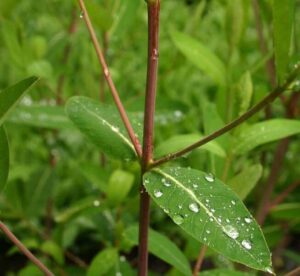How to Propagate Apocynum cannabinum

Propagating Apocynum cannabinum: A Guide to the Indian Hemp Dogbane
Apocynum cannabinum, commonly known as Indian hemp, is a fascinating native North American perennial herb. Characterized by its upright, branching stems, lance-shaped leaves, and clusters of small, bell-shaped white or pinkish flowers, it offers a unique textural element to gardens and boasts a rich history of traditional uses. Its resilience and adaptability make it a popular choice amongst gardeners seeking low-maintenance native plants, while its relatively unique propagation characteristics present a rewarding challenge for the plant enthusiast.
Seed Germination:
Currently, there are no known reliable methods for seed germination propagation of Apocynum cannabinum. While seeds are produced, germination rates are notoriously low, and success is highly unpredictable even under optimal conditions. Further research is needed to identify effective techniques for stimulating germination. The challenges include potential dormancy mechanisms within the seed coat, and the plant’s reliance on specific environmental cues for successful germination.
Cuttings:
Cuttings offer a more reliable method for propagating Apocynum cannabinum.
- Challenges: While relatively successful, rooting cuttings can be slow and requires careful attention to detail. The success rate depends strongly on the timing and method of taking cuttings.
- Tips: Semi-hardwood cuttings taken in late summer or early autumn generally yield the best results. Use a sharp, clean knife or shears to take 4-6 inch cuttings, removing lower leaves to prevent rot. Dip the cut ends in a rooting hormone before planting in a well-draining growing medium such as a peat moss and perlite mix. Maintain consistently moist but not soggy conditions, and provide adequate humidity, potentially using a propagator or humidity dome.
- Rewards: Cuttings provide a faster method of propagation compared to division and offer a reliable way to increase the number of plants from existing stock, preserving desirable traits of the parent plant.
Division:
Division is a viable and often successful method for propagating established Apocynum cannabinum plants.
- Challenges: Division is best undertaken in early spring or autumn when the plant is actively growing or dormant. Care should be taken to avoid damaging the roots, and the divided sections need to be sizable enough to establish themselves independently.
- Tips: Dig up the entire root system carefully, then using a sharp spade or knife, divide the root mass into sections, ensuring each section contains multiple shoots and a healthy portion of roots. Replant the divisions immediately, ensuring adequate spacing and watering.
- Rewards: Division provides a straightforward path to increasing the number of plants. It is a relatively quick method, and the resulting plants establish themselves more easily than those grown from cuttings.
Tissue Culture:
Tissue culture propagation of Apocynum cannabinum is not widely reported, and reliable protocols are not readily available. This method, while potentially capable of high-volume propagation and disease-free plants, requires specialized equipment and expertise. Therefore, it’s not recommended for the home propagator.
Conclusion:
Propagating Apocynum cannabinum presents unique challenges across different methods. While seed germination is currently unreliable, cuttings and division offer viable options for successful propagation. The rewards, however, are well worth the effort. Successfully cultivating this hardy native plant from a cutting or division provides a deep sense of accomplishment. The unique satisfaction lies not only in the beauty of the resulting plants but in overcoming the subtle challenges associated with their propagation, demonstrating a deeper connection with the natural world and the processes of plant life. Aspiring propagators should experiment with cuttings as a reliable starting point and gradually explore the other methods as expertise grows. Remember patience, attention to detail, and a spirit of experimentation are key to success.